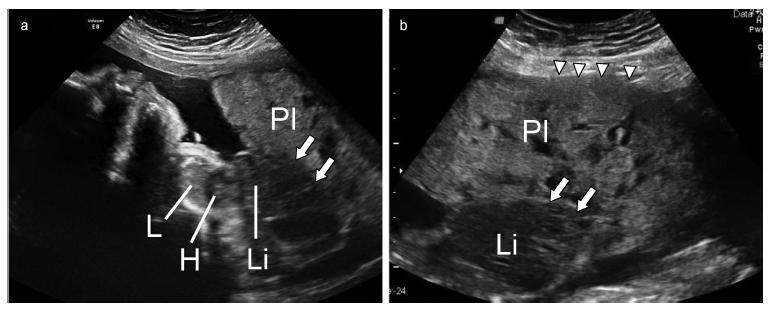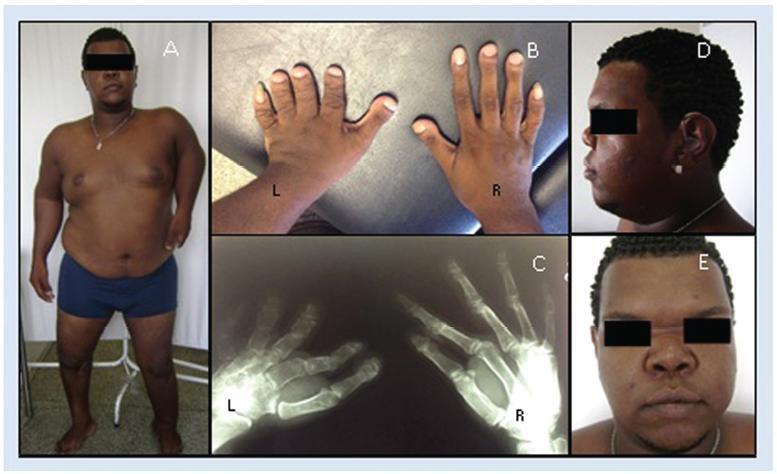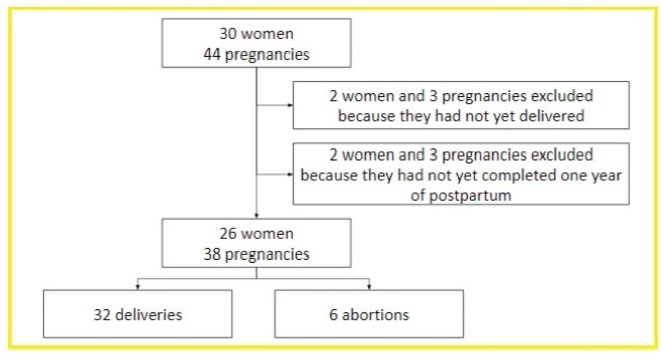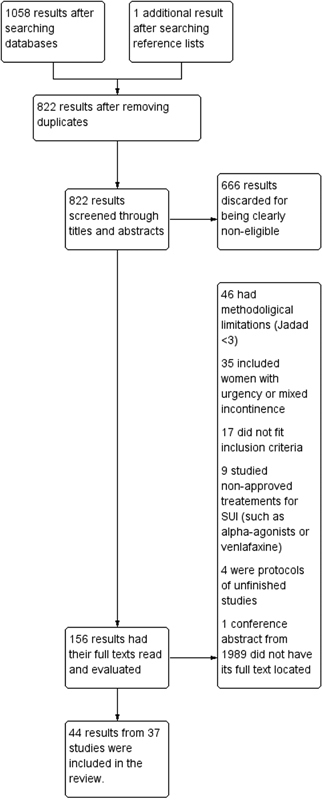-
FEBRASGO POSITION STATEMENT08-15-2024
Difficult fetal extraction in cesarean section: Number 8 – 2024
Revista Brasileira de Ginecologia e Obstetrícia. 2024;46:e-FPS08
Abstract
FEBRASGO POSITION STATEMENTDifficult fetal extraction in cesarean section: Number 8 – 2024
Revista Brasileira de Ginecologia e Obstetrícia. 2024;46:e-FPS08
-
Letter to the Editor08-05-2024
Comment on: Prediction and secondary prevention of preeclampsia from the perspective of public health management – the initiative of the State of Rio de Janeiro
Revista Brasileira de Ginecologia e Obstetrícia. 2024;46:e-rbgo80
Abstract
Letter to the EditorComment on: Prediction and secondary prevention of preeclampsia from the perspective of public health management – the initiative of the State of Rio de Janeiro
Revista Brasileira de Ginecologia e Obstetrícia. 2024;46:e-rbgo80
Views242Dear Editor,We read with interest the article “Prediction and secondary prevention of preeclampsia from the perspective of public health management—the initiative of the State of Rio de Janeiro,” published by Braga and colleagues.() The authors recommend universal treatment (for all pregnant women) with elemental calcium at 1500 mg per day and identification of women at […]See more -
Original Article07-26-2024
Effect of subchorionic hematoma on first-trimester maternal serum free β-hCG and PAPP-A levels
Revista Brasileira de Ginecologia e Obstetrícia. 2024;46:e-rbgo66
Abstract
Original ArticleEffect of subchorionic hematoma on first-trimester maternal serum free β-hCG and PAPP-A levels
Revista Brasileira de Ginecologia e Obstetrícia. 2024;46:e-rbgo66
Views289Abstract
Objective
This study aimed to investigate the effects of the presence of subchorionic hematoma (SH) in early pregnancies with threatened miscarriage (TM) on levels of first-trimester maternal serum markers, pregnancy-associated plasma protein-A (PAPP-A), and free β-human chorionic gonadotropin (β-hCG) levels.
Methods
The data of TM cases with SH in the first trimester between 2015 and 2021 were evaluated retrospectively. The data of age and gestational age-matched TM cases without SH were also assessed to constitute a control group. Demographic characteristics, obstetric histories, ultrasonographic findings, and free β-hCG and PAPP-A levels of the groups were compared.
Results
There were 119 cases in the study group and 153 cases in the control group. The median vertical and longitudinal lengths of the SH were 31 mm and 16 mm. The median age of both groups was similar (p=0.422). The MoM value of PAPP-A was 0.088 (.93) in the study group and 0.9 (0.63) in the control group (p=0.519). Similarly, the MoM value of free β-hCG was 1.04 (0.78) in the study group and 0.99 (0.86) in the control group (p=0.66). No significant relationship was found in the multivariate analysis between free β-hCG MoM, PAPP-A MoM, age, gravida, and vertical and longitudinal lengths of the hematoma (p>0.05).
Conclusion
The level of PAPP-A and free β-hCG were not affected by the SH. Therefore, these markers can be used reliably in TM cases with SH for the first-trimester fetal aneuploidy screening test.
Key-words Abortion, threatenedAneuploidybiomarkersChorionic gonadotropinPregnancy trimester, firstPregnancy-associated plasma protein-ASubchorionic hematomaSee more -
Original Article07-26-2024
Maternal deaths caused by eclampsia in Brazil: a descriptive study from 2000 to 2021
Revista Brasileira de Ginecologia e Obstetrícia. 2024;46:e-rbgo65
Abstract
Original ArticleMaternal deaths caused by eclampsia in Brazil: a descriptive study from 2000 to 2021
Revista Brasileira de Ginecologia e Obstetrícia. 2024;46:e-rbgo65
Views305See moreAbstract
Objective
Eclampsia is a hypertensive disorder that occurs during pregnancy and can lead to death. The literature has gaps by not providing comprehensive data on the epidemiology of the disease, restricting analysis to limited temporal intervals and geographical locations. This study aims to characterize the epidemiological profile of women who died from eclampsia in Brazil from 2000 to 2021.
Methods
The maternal mortality data were obtained from the Sistema de Informações sobre Mortalidade, with the following variables of interest selected: “Federative Unit,” “Year,” “Age Range,” “Race/Color,” and “Education Level.” The collection of the number of live births for data normalization was conducted in the Sistema de Informações sobre Nascidos Vivos. Statistical analyses were performed using GraphPad Prism, calculating odds ratio for variables and fixing number of deaths per 100,000 live births for calculating maternal mortality ratio (MMR).
Results
There was a downward trend in maternal mortality rate during the study period. Maranhão stood out as the federative unit with the highest MMR (17 deaths per 100.000 live births). Mothers aged between 40 and 49 years (OR = 3.55, CI: 3.11–4.05) presents higher MMR. Additionally, black women showed the highest MMR (OR = 4.67, CI: 4.18–5.22), as well as mothers with no educational background (OR = 5.83, CI: 4.82–7.06).
Conclusion
The epidemiological profile studied is predominantly composed of mothers with little or no formal education, self-declared as Black, residing in needy states and with advanced aged. These data are useful for formulating public policies aimed at combating the issue.
-
Original Article07-26-2024
Agreement between frozen section and histopathology to detect malignancy in adnexal masses according to size and morphology by ultrasound
Revista Brasileira de Ginecologia e Obstetrícia. 2024;46:e-rbgo63
Abstract
Original ArticleAgreement between frozen section and histopathology to detect malignancy in adnexal masses according to size and morphology by ultrasound
Revista Brasileira de Ginecologia e Obstetrícia. 2024;46:e-rbgo63
Views224See moreAbstract
Objective
Management of suspect adnexal masses involves surgery to define the best treatment. Diagnostic choices include a two-stage procedure for histopathology examination (HPE) or intraoperative histological analysis – intraoperative frozen section (IFS) and formalin-fixed and paraffin-soaked tissues (FFPE). Preoperative assessment with ultrasound may also be useful to predict malignancy. We aimed at determining the accuracy of IFS to evaluate adnexal masses stratified by size and morphology having HPE as the diagnostic gold standard.
Methods
A retrospective chart review of 302 patients undergoing IFS of adnexal masses at Hospital de Clínicas de Porto Alegre, between January2005 and September2011 was performed. Data were collected regarding sonographic size (≤10cm or >10cm), characteristics of the lesion, and diagnosis established in IFS and HPE. Eight groups were studied: unilocular lesions; septated/cystic lesions; heterogeneous (solid/cystic) lesions; and solid lesions, divided in two main groups according to the size of lesion, ≤10cm or >10cm. Kappa agreement between IFS and HPE was calculated for each group.
Results
Overall agreement between IFS and HPE was 96.1% for benign tumors, 96.1% for malignant tumors, and 73.3% for borderline tumors. Considering the combination of tumor size and morphology, 100% agreement between IFS and HPE was recorded for unilocular and septated tumors ≤10cm and for solid tumors.
Conclusion
Stratification of adnexal masses according to size and morphology is a good method for preoperative assessment. We should wait for final HPE for staging decision, regardless of IFS results, in heterogeneous adnexal tumors of any size, solid tumors ≤10cm, and all non-solid tumors >10cm.
-
Original Article07-26-2024
Study of 138 vulvar lichen sclerosus patients and the malignant risk transformation
Revista Brasileira de Ginecologia e Obstetrícia. 2024;46:e-rbgo62
Abstract
Original ArticleStudy of 138 vulvar lichen sclerosus patients and the malignant risk transformation
Revista Brasileira de Ginecologia e Obstetrícia. 2024;46:e-rbgo62
Views239See moreAbstract
Objective
To report the prevalence of malignant transformation of vulvar lichen sclerosus (VLS) and possible risk factors.
Methods
This is a cohort study with data analysis from medical records of 138 patients with histological diagnosis of VLS registered at the Vulvar Pathology Outpatient Clinic of the University Hospital, between 2007 and 2017. Predominance of risk factors was performed using logistic regression analysis. The variables studied were the length of follow-up, age, regular or irregular follow up; presence of symptoms (dyspareunia, pruritus and/or vulvar burning); histology characteristics, the presence of epithelial hyperplasia; and the presence of autoimmune diseases.
Results
There were 138 patients included in the study, and among them five progressed to malignant transformation. The patients had a median age of 59 years and 83% were symptomatic. The most frequent symptom was itching with 72%. Autoimmune diseases were present in 11.6%, the most prevalent being thyroid disease. All five case of malignant transformation (0.6%) had an irregular follow up. The logistic regression analysis was used among the studied variables, and no statistical significance was found among them (p ≥ 0.05). The relationship between hyperplasia and the clinical outcome of malignant transformation, in which non-significant but acceptable p value close to 0.05 was observed.
Conclusion
The prevalence of malignant transformation in patients with VLS was 0.6%, and common factors were the lack of adherence to medical treatments and the loss of follow-up.
-
Original Article07-26-2024
Association of insulin-like growth factor II mrna-binding protein 3 (IMP3) expression with prognostic and morphological factors in endometrial cancer
Revista Brasileira de Ginecologia e Obstetrícia. 2024;46:e-rbgo61
Abstract
Original ArticleAssociation of insulin-like growth factor II mrna-binding protein 3 (IMP3) expression with prognostic and morphological factors in endometrial cancer
Revista Brasileira de Ginecologia e Obstetrícia. 2024;46:e-rbgo61
Views206See moreAbstract
Objective
Endometrial cancer (EC) is a heterogeneous disease with recurrence rates ranging from 15 to 20%. The discrimination of cases with a worse prognosis aims, in part, to reduce the length of surgical staging in cases with a better prognosis. This study aimed to evaluate the association between Insulin-like growth factor II mRNA-binding protein 3 (IMP3) expression and prognostic and morphological factors in EC.
Methods
This retrospective, cross-sectional, analytical study included 79 EC patients – 70 endometrioid carcinoma (EEC) and 9 serous carcinoma (SC) – and 74 benign endometrium controls. IMP3 expression was evaluated by immunohistochemistry-based TMA (Tissue Microarray), and the results were associated with morphological and prognostic factors, including claudins 3 and 4, estrogen and progesterone receptors, TP53, and KI67.
Results
IMP3 expression was significantly higher in SC compared to EEC in both extent (p<0.001) and intensity (p=0.044). It was also significantly associated with worse prognostic factors, including degree of differentiation (p=0.024, p<0.001), staging (p<0.001; p<0.001) and metastasis (p=0.002; p<0.001). IMP3 expression was also significant in extent (p=0.002) in endometrial tumors compared with controls. In addition, protein TP53 and KI67 showed significant associations in extent and intensity, respectively.
Conclusion
IMP3 expression was associated with worse prognostic factors studied. These findings suggest that IMP3 may be a potential biomarker for EC poorer prognosis.
-
Original Article07-26-2024
Factors associated with exclusive breastfeeding in “Near Miss” neonates in Brazil
Revista Brasileira de Ginecologia e Obstetrícia. 2024;46:e-rbgo59
Abstract
Original ArticleFactors associated with exclusive breastfeeding in “Near Miss” neonates in Brazil
Revista Brasileira de Ginecologia e Obstetrícia. 2024;46:e-rbgo59
Views170See moreAbstract
Objective
To assess the association between sociodemographic and perinatal factors and hospital practices to encourage exclusive breastfeeding in near miss neonates in maternity hospitals.
Methods
This is a prospective cohort of live births from the survey “To be born in Brazil” conducted between 2011 and 2012. The weighted number of newborns who met the neonatal near miss criteria was 832. Exclusive breastfeeding at hospital discharge and 45 days after delivery were dependent variables of the study. The sociodemographic and perinatal factors of the puerperal women and hospital practices to encourage breastfeeding were independent variables. The data were analyzed with Poisson regression and set with p value<0.05. Is exclusive breastfeeding in neonatal near misses associated with factors related to sociodemographic conditions, maternal characteristics and the organization of health services?
Results
Data from 498 women and their children were analyzed. Mothers with incomplete primary education were more likely (36%) to have exclusive breastfeeding (RR: 1.36; 95% CI: 1.06-1.74) at discharge. Women who did not offer the breast to the newborn in the joint accommodation (65%) were less likely to be breastfeeding exclusively (RR: 0.65; 95% CI: 0.56-0.75) at discharge. Variables that increased the probability of exclusive breastfeeding after 45 days of delivery were primiparity (RR: 1.36; 95% CI: 1.08-1.69) and having the newborn in the delivery room (RR: 1.90; 95% CI: 1.12-3.24).
Conclusion
Exclusive breastfeeding in neonatal near misses was associated with maternal characteristics and important hospital practices, such as being breastfed in the joint accommodation and the newborn being in the mother’s lap in the delivery room.
Search
Search in:
Tag Cloud
Pregnancy (252)Breast neoplasms (104)Pregnancy complications (104)Risk factors (103)Menopause (88)Ultrasonography (83)Cesarean section (78)Prenatal care (71)Endometriosis (70)Obesity (61)Infertility (57)Quality of life (55)prenatal diagnosis (51)Women's health (48)Maternal mortality (46)Postpartum period (46)Pregnant women (45)Breast (44)Prevalence (43)Uterine cervical neoplasms (43)









